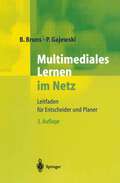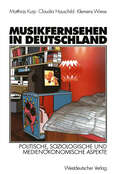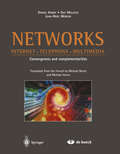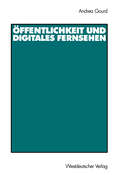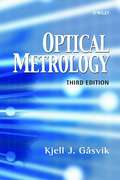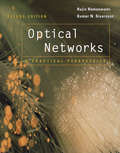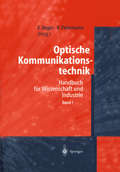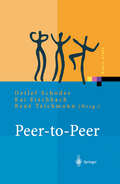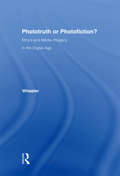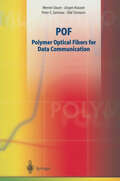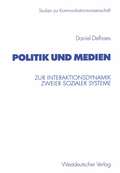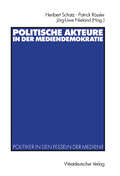- Table View
- List View
Multimediales Lernen im Netz: Leitfaden für Entscheider und Planer
by Beate Bruns Petra GajewskiIst die Einführung von E-Learning und E-Collaboration eine für unser Unternehmen nützliche Investition? Das ist eine Frage, auf die Sie nach Lektüre dieses Buches mit Sicherheit eine begründete Antwort geben werden! Multimediales Lernen im Netz, E-Learning und E-Collaboration haben sich in den letzten Jahren mit Riesenschritten weiter entwickelt. Viele Organisationen setzen inzwischen E-Learning erfolgreich ein und haben zahlreiche praktische Erfahrungen gesammelt. Multimediales Lernen im Netz bietet Entscheidungsträgern aus Personal und IT eine umfassende und zugleich kompakte Orientierung. Analysen, Checklisten, Hintergrundinformationen und zahlreiche praktische Beispiele runden diesen leicht verständlichen und lebendigen Leitfaden für E-Learning und E-Collaboration ab. Die einschlägige Berufs- und Gremientätigkeit der Autorinnen gewährleisten den hohen Praxisbezug.
Musikfernsehen in Deutschland: Politische, soziologische und medienökonomische Aspekte
by Matthias Kurp Claudia Hauschild Klemens WieseVor dem Hintergrund eines grundlegenden Wertewandels sowie des weit verbreiteten vermeintlichen Hangs zum Unpolitischen und der Faszinationswirkung von Pop-Idolen werden die publizistischen Vermittlungspotenziale von Musikfernsehen dargestellt. Darüber hinaus bietet der Band einen umfassenden und aktuellen Überblick über die Entwicklung des Musikfernsehens in Deutschland sowie die intra- und intermedialen Vermarktungsstrategien von Popmusik-Unternehmen und Musikkanälen.
Nachrichtentechnik: Eine Einführung für alle Studiengänge (uni-script)
by Martin WernerDas Buch stellt wichtige und typische Gebiete der modernen Nachrichtentechnik vor. Es richtet sich insbesondere an Studierende der Elektrotechnik und Informatik am Ende des Grundstudiums, die sich einen fundierten Einblick in die Aufgaben und Lösungen der Nachrichtentechnik verschaffen wollen. Die Auswahl und Darstellung der Themen vermittelt solides Grundlagenwissen und einen Einblick in die Zusammenhänge und Anwendung, ohne dabei dem vertiefenden Fachstudium vorzugreifen. In der dritten Auflage wurde der Abschnitt Telekommunikationsnetze neu aufgenommen, der Abschnitt Mobilkommunikation am Beispiel von GSM wurde auf etwa den doppelten Umfang erweitert und schließt die neuen Dienste HSCSD und GPRS ein.
Negotiation Analysis: The Science and Art of Collaborative Decision Making
by Howard RaiffaThis masterly book substantially extends Howard Raiffa’s earlier classic, The Art and Science of Negotiation. It does so by incorporating three additional supporting strands of inquiry: individual decision analysis, judgmental decision making, and game theory. Each strand is introduced and used in analyzing negotiations. The book starts by considering how analytically minded parties can generate joint gains and distribute them equitably by negotiating with full, open, truthful exchanges. The book then examines models that disengage step by step from that ideal. It also shows how a neutral outsider (intervenor) can help all negotiators by providing joint, neutral analysis of their problem. Although analytical in its approach—building from simple hypothetical examples—the book can be understood by those with only a high school background in mathematics. It therefore will have a broad relevance for both the theory and practice of negotiation analysis as it is applied to disputes that range from those between family members, business partners, and business competitors to those involving labor and management, environmentalists and developers, and nations.
NETWORKING 2002: Second International IFIP-TC6 Networking Conference, Pisa, Italy, May 19-24, 2002 Proceedings (Lecture Notes in Computer Science #2345)
by Enrico Gregori Marco Conti Andrew T. Cambell Guy Omidyar Moshe ZukermanThis book constitutes the refereed proceedings of the Second IFIP-TC6 Netw- king Conference, Networking 2002. Networking 2002 was sponsored bythe IFIP Working Groups 6.2, 6.3, and 6.8. For this reason the conference was structured into three tracks: i) Networking Technologies, Services, and Protocols, ii) Perf- mance of Computer and Communication Networks, and iii) Mobile and Wireless Communications. This year the conference received 314 submissions coming from 42 countries from all ?ve continents Africa (4), Asia (84), America (63), Europe (158), and Oc- nia (5). This represents a 50% increase in submissions over the ?rst conference, thus indicating that Networking is becoming a reference conference for wor- wide researchers in the networking community. With so manypapers to choose from, the job of the Technical Program C- mittee, to provide a conference program of the highest technical excellence, was both challenging and time consuming. From the 314 submissions, we ?nallys- ected 82 full papers for presentation during the conference technical sessions. To give young researchers and researchers from emerging countries the oppor- nityto present their work and to receive useful feedback from participants, we decided to include two poster sessions during the technical program. Thirty-one short papers were selected for presentation during the poster sessions. The conference technical program was split into three days, and included, in addition to the 82 refereed contributions, 5 invited papers from top-level rese- chers in the networking community.
Networks: Internet · Telephony · Multimedia
by Daniel Hardy Guy Malleus Jean-Noel MereurThis handbook delivers a complete and practice-oriented overview of the fundamentals of today's telecommunications networks and the future prospects for next generation networks (NGN). The very clear and concise text is supplemented by many colour illustrations and embedded into a functional four-colour layout.
Neural-Symbolic Learning Systems: Foundations and Applications (Perspectives in Neural Computing)
by Artur S. d'Avila Garcez Krysia B. Broda Dov M. GabbayArtificial Intelligence is concerned with producing devices that help or replace human beings in their daily activities. Neural-symbolic learning systems play a central role in this task by combining, and trying to benefit from, the advantages of both the neural and symbolic paradigms of artificial intelligence. This book provides a comprehensive introduction to the field of neural-symbolic learning systems, and an invaluable overview of the latest research issues in this area. It is divided into three sections, covering the main topics of neural-symbolic integration - theoretical advances in knowledge representation and learning, knowledge extraction from trained neural networks, and inconsistency handling in neural-symbolic systems. Each section provides a balance of theory and practice, giving the results of applications using real-world problems in areas such as DNA sequence analysis, power systems fault diagnosis, and software requirements specifications. Neural-Symbolic Learning Systems will be invaluable reading for researchers and graduate students in Engineering, Computing Science, Artificial Intelligence, Machine Learning and Neurocomputing. It will also be of interest to Intelligent Systems practitioners and anyone interested in applications of hybrid artificial intelligence systems.
The New Psychology of Language: Cognitive and Functional Approaches To Language Structure, Volume II
by Michael TomaselloFrom the point of view of psychology and cognitive science, much of modern linguistics is too formal and mathematical to be of much use. The newly emerging approaches to language termed, "Functional and Cognitive Linguistics," however, are much less formally oriented. Instead, functional and cognitive approaches to language structure are typically couched in terms already familiar to cognitive scientists: perception, attention, conceptualization, meaning, symbols, categories, schemas, perspectives, discourse context, social interaction, and communicative goals. The account of human linguistic competence emerging from this new paradigm should be extremely useful to scientists studying how human beings (not formal devices) comprehend, produce, and acquire natural languages. The current volume brings together 10 of the most important linguists in cognitive and functional linguistics whose work is often not easily available to those outside the field. In original contributions, each of these scholars focuses on an important aspect of human linguistic competence, with a special eye to readers who are not professional linguists. Of special importance to all of the contributions are the cognitive and social interactional processes that constitute human linguistic communication. The book is of special interest to psychologists, cognitive scientists, psycholinguists, and developmental psycholinguists, in addition to linguists taking a more psychological approach to language.
The New Psychology of Language: Cognitive and Functional Approaches To Language Structure, Volume II (Psychology Press And Routledge Classic Editions Ser.)
by Michael TomaselloFrom the point of view of psychology and cognitive science, much of modern linguistics is too formal and mathematical to be of much use. The newly emerging approaches to language termed, "Functional and Cognitive Linguistics," however, are much less formally oriented. Instead, functional and cognitive approaches to language structure are typically couched in terms already familiar to cognitive scientists: perception, attention, conceptualization, meaning, symbols, categories, schemas, perspectives, discourse context, social interaction, and communicative goals. The account of human linguistic competence emerging from this new paradigm should be extremely useful to scientists studying how human beings (not formal devices) comprehend, produce, and acquire natural languages. The current volume brings together 10 of the most important linguists in cognitive and functional linguistics whose work is often not easily available to those outside the field. In original contributions, each of these scholars focuses on an important aspect of human linguistic competence, with a special eye to readers who are not professional linguists. Of special importance to all of the contributions are the cognitive and social interactional processes that constitute human linguistic communication. The book is of special interest to psychologists, cognitive scientists, psycholinguists, and developmental psycholinguists, in addition to linguists taking a more psychological approach to language.
Öffentlichkeit und digitales Fernsehen
by Andrea GourdFolgt dem Strukturwandel der elektronischen Medien infolge Digitalisierung der Strukturwandel (oder gar Zerfall?) der Öffentlichkeit? Und welche Folgen hat dies für die moderne Demokratie, die das Prinzip Öffentlichkeit als Bedingung demokratischer Entscheidungsfindung institutionalisiert? Theoretische Konzeptionen von Öffentlichkeit werden überprüft anhand einer luziden Beschreibung der digitalisierten Fernsehlandschaft. Zugangsfreiheit und Konzentrationskontrolle des digitalen Fernsehens, aber auch Zuschauerverhalten und veränderte Rahmenbedingungen öffentlicher Diskurse werden analysiert anhand zahlreicher empirischer Befunde. Benannt werden die Schwächen der aktuellen rundfunkrechtlichen Regelungen, aber auch detaillierte Vorschläge, wie der Prozess der Digitalisierung adäquat politisch gestaltet werden kann.
Optical and Wireless Communications: Next Generation Networks (Electrical Engineering and Applied Signal Processing Series)
by Matthew N.O. SadikuOptical and wireless technologies are being introduced into the global communications infrastructure at an astonishing pace. Both are revolutionizing the industry and will undoubtedly dominate its future, yet in the crowded curricula in most electrical engineering programs, there is no room in typical data communications courses for proper coverage of these "next generation" technologies.Optical and Wireless Communications: Next Generation Networks covers both types of networks in a unique presentation designed for a one-semester course for senior undergraduate or graduate engineering students. Part I: Optical Networks covers optical fibers, transmitters, receivers, multiplexers, amplifiers, and specific networks, including FDDI, SONET, fiber channel, and wavelength-routed networks. Part II:Wireless Networks examines fundamental concepts and specific wireless networks, such as LAN, ATM, wireless local loop, and wireless PBXs. This section also explores cellular technologies and satellite communications.Eventually, next generation networks will be as ubiquitous as traditional telephone networks, and today's engineering students must be prepared to meet the challenges of optical and wireless systems development and deployment. Filled with illustrations, examples, and end-of-chapter problems, Optical and Wireless Communications: Next Generation Networks provides a brief but comprehensive introduction to these technologies that will help future engineers build the foundation they need for success.
Optical and Wireless Communications: Next Generation Networks (Electrical Engineering & Applied Signal Processing Series)
by Matthew N.O. SadikuOptical and wireless technologies are being introduced into the global communications infrastructure at an astonishing pace. Both are revolutionizing the industry and will undoubtedly dominate its future, yet in the crowded curricula in most electrical engineering programs, there is no room in typical data communications courses for proper coverage of these "next generation" technologies.Optical and Wireless Communications: Next Generation Networks covers both types of networks in a unique presentation designed for a one-semester course for senior undergraduate or graduate engineering students. Part I: Optical Networks covers optical fibers, transmitters, receivers, multiplexers, amplifiers, and specific networks, including FDDI, SONET, fiber channel, and wavelength-routed networks. Part II:Wireless Networks examines fundamental concepts and specific wireless networks, such as LAN, ATM, wireless local loop, and wireless PBXs. This section also explores cellular technologies and satellite communications.Eventually, next generation networks will be as ubiquitous as traditional telephone networks, and today's engineering students must be prepared to meet the challenges of optical and wireless systems development and deployment. Filled with illustrations, examples, and end-of-chapter problems, Optical and Wireless Communications: Next Generation Networks provides a brief but comprehensive introduction to these technologies that will help future engineers build the foundation they need for success.
Optical Metrology
by Kjell J. GåsvikNew material on computerized optical processes, computerized ray tracing, and the fast Fourier transform, Bibre-Bragg sensors, and temporal phase unwrapping. * New introductory sections to all chapters. * Detailed discussion on lasers and laser principles, including an introduction to radiometry and photometry. * Thorough coverage of the CCD camera.
Optical Networks: A Practical Perspective (ISSN)
by Rajiv Ramaswami Kumar SivarajanThis fully updated and expanded second edition of Optical Networks: A Practical Perspective succeeds the first as the authoritative source for information on optical networking technologies and techniques. Written by two of the field's most respected individuals, it covers componentry and transmission in detail but also emphasizes the practical networking issues that affect organizations as they evaluate, deploy, or develop optical solutions.This book captures all the hard-to-find information on architecture, control and management, and other communications topics that will affect you every step of the way-from planning to decision-making to implementation to ongoing maintenance. If your goal is to thoroughly understand practical optical networks, this book should be your first and foremost resource.* Focuses on practical, networking-specific issues: everything you need to know to implement currently available optical solutions.* Provides the transmission and component details you need to understand and assess competing technologies.* Offers updated and expanded coverage of propagation, lasers and optical switching technology, network design, transmission design, IP over WDM, wavelength routing, optical standards, and more.
Optical WDM Networks: Principles and Practice (The Springer International Series in Engineering and Computer Science #554)
by Krishna M. Sivalingam Suresh SubramaniamOptical WDM networking technology is spearheading a bandwidth revolution in the networking infrastructure being developed for the next generation Internet. Rapid advances in optical components have enabled the transition from point-to-point WDM links to all-optical networking. Optical WDM Networks: Principles and Practice presents some of the most important challenges facing the optical networking community, along with some suggested solutions. Earlier textbooks in optical networking have a narrower perspective, and rapidly advancing research has created the need for fresh and current information on problems and issues in the field. The volume editors and contributing authors have endeavoured to capture a substantial subset of the key problems and known solutions to these problems. All of the chapters are original contributions from leading international researchers. The chapters address a wide variety of topics, including the state of the art in WDM technology, physical components that make up WDM fiber-optic networks, medium access protocols, wavelength routed networks, optical access networks, network management, and performance evaluation of wavelength routing networks. The chapters also survey critical points in past research and tackle more recent problems. Practitioners and network product engineers interested in current state-of-the-art information beyond textbook-type coverage, and graduate students commencing research in this area, will appreciate the concise - and pertinent - information presented herein.
Optische Kommunikationstechnik: Handbuch für Wissenschaft und Industrie
Dieses Nachschlagewerk wendet sich vor allem an Ingenieure und Physiker in der Telekommunikationsindustrie, bei Netzbetreibern und in der Datenkommunikation. Weiterhin kann es diesen Nutzern sowie Wissenschaftlern und Studenten einen Überblick über das Fachgebiet verschaffen und die Einarbeitung in speziellere Felder ermöglichen. Die grundlegenden Beziehungen und Technologien werden zusammengestellt und in ihren wesentlichen Zügen erläutert. Grafische Darstellungen und Abbildungen vermitteln die Zusammenhänge anschaulich und ingenieurgerecht. Zu dem Werk haben maßgebliche Forscher und Industrieingenieure aus dem deutschen Sprachraum beigetragen. Als Vorbild für die Konzeption diente das Standardwerk über Hochfrequenztechnik von MEINKE und GUNDLACH.
The Oral History Workshop: Collect and Celebrate the Life Stories of Your Family and Friends
by Cynthia Hart Lisa SamsonWe all know that we should ask now, before it's too late, before the stories are gone forever. But knowing and doing are two different things.Cynthia Hart, author of Cynthia Hart's Scrapbook Workshop, shows exactly how to collect, record, share, and preserve a family member's or a friend's oral history in this practical and inspirational guide. The Oral History Workshop breaks down what too often feels like an overwhelming project into a series of easily manageable steps: how to prepare for an interview; how to become a better listener; why there's always more beneath the surface and the questions to ask to get there; the pros and cons of video recording, including how your subjects should dress so the focus is on their words; four steps to keeping the interview on track; how to be attentive to your subject's energy levels; and the art of archiving or scrapbooking the interview into a finished keepsake.At the heart of the book are hundreds of questions designed to cover every aspect of your subject's history: Do you remember when and how you learned to read? Who in your life showed you the most kindness? What insights have you gained about your parents over the years? Would you describe yourself as an optimist or a pessimist? In what ways were you introduced to music? What is the first gift you remember giving? If you could hold on to one memory forever, what would it be? When the answers are pieced together, a mosaic appears—a living history.
Peer-to-Peer: Ökonomische, technologische und juristische Perspektiven (Xpert.press)
by Detlef Schoder Kai Fischbach Rene TeichmannPeer-to-Peer Systems: First International Workshop, IPTPS 2002, Cambridge, MA, USA, March 7-8, 2002, Revised Papers (Lecture Notes in Computer Science #2429)
by Peter Druschel Frans Kaashoek Antony RowstronPeer-to-peer has emerged as a promising new paradigm for large-scale distributed computing. The International Workshop on Peer-to-Peer Systems (IPTPS) aimed to provide a forum for researchers active in peer-to-peer computing to discuss the state of the art and to identify key research challenges. The goal of the workshop was to examine peer-to-peer technologies, appli- tions, and systems, and also to identify key research issues and challenges that lie ahead. In the context of this workshop, peer-to-peer systems were characterized as being decentralized, self-organizing distributed systems, in which all or most communication is symmetric. The program of the workshop was a combination of invited talks, pres- tations of position papers, and discussions covering novel peer-to-peer appli- tions and systems, peer-to-peer infrastructure, security in peer-to-peer systems, anonymity and anti-censorship, performance of peer-to-peer systems, and wo- load characterization for peer-to-peer systems. To ensure a productive workshop environment, attendance was limited to 55 participants. Each potential participant was asked to submit a position paper of 5 pages that exposed a new problem, advocated a speci?c solution, or reported on actual experience. We received 99 submissions and were able to accept 31. Participants were invited based on the originality, technical merit, and topical relevance of their submissions, as well as the likelihood that the ideas expressed in their submissions would lead to insightful technical discussions at the workshop.
Peter Jennings: A Reporter's Life
by Lynn Sherr Kate Darnton Kayce Freed JenningsPeter Jennings was the sole anchor of ABC's World News Tonight from 1983 until his death from cancer in 2005. For many Americans, he was the voice and face that gave shape and meaning to every day's news. But who was Peter Jennings really? In this absorbing biography, readers will get to know Jennings through the memories of his friends, family, competitors, colleagues, and interview subjects. Their stories are full of surprises. Jennings, we learn, was a high school dropout who spent the rest of his life in pursuit of knowledge. He traveled the world in search of stories, a notebook perpetually thrust through his back belt loop. In his front pocket, he carried a miniature copy of the Constitution, a testament to his love for the United States; a Canadian by birth, Jennings acquired American citizenship in 2003. Peter Jennings was a celebrity, of course -- a dashingly handsome and elegant man, famous for his ability to charm women and world leaders alike -- but in these pages he is remembered as a loyal friend and a devoted family man, who loved nothing more than to canoe with his kids and listen to jazz with his friends in the Hamptons. Not that he was the relaxing sort. Jennings was a task-master, who ripped other reporters' pieces to shreds, forcing them to rewrite from the ground up. He was a perfectionist, too, who drove his fellow correspondents crazy with his ad-libbed questions on the air. It was all about standards. Throughout his life, Peter Jennings was driven by a passion to seek the truth and convey that truth accurately, simply, cleanly, and elegantly to his American audience. He was our voice.
Phototruth Or Photofiction?: Ethics and Media Imagery in the Digital Age
by Thomas H. WheelerThis text examines the use of images in journalistic contexts and the manipulation of these images to accomplish varying objectives. It provides a framework for critical discussion among professionals, educators, students, and concerned consumers of newspapers, magazines, online journals, and other nonfiction media. It also offers a method of assessing the ethics of mass-media photos, which will help visual journalists to embrace new technologies while preserving their credibility. Phototruth or Photofiction? also: *recounts the invention of photography and how it came to be accorded an extraordinary degree of trust; *details how photos were staged, painted, composited and otherwise faked, long before digital technology; *lists contemporary image-altering products and practices; *details many examples of manipulated images in nonfiction media and lists rationales offered in defense of them; *explains how current ethical principles have been derived; *lays groundwork for an ethical protocol by explaining conventions of taking, processing, and publishing journalistic photos; and *offers tests for assessing the appropriateness of altered images in non-fiction media. Each chapter is followed by "Explorations" designed to facilitate classroom discussion and to integrate into those interactions the students' own perceptions and experiences. The book is intended for students and others interested in the manipulation of images.
Phototruth Or Photofiction?: Ethics and Media Imagery in the Digital Age
by Thomas H. WheelerThis text examines the use of images in journalistic contexts and the manipulation of these images to accomplish varying objectives. It provides a framework for critical discussion among professionals, educators, students, and concerned consumers of newspapers, magazines, online journals, and other nonfiction media. It also offers a method of assessing the ethics of mass-media photos, which will help visual journalists to embrace new technologies while preserving their credibility. Phototruth or Photofiction? also: *recounts the invention of photography and how it came to be accorded an extraordinary degree of trust; *details how photos were staged, painted, composited and otherwise faked, long before digital technology; *lists contemporary image-altering products and practices; *details many examples of manipulated images in nonfiction media and lists rationales offered in defense of them; *explains how current ethical principles have been derived; *lays groundwork for an ethical protocol by explaining conventions of taking, processing, and publishing journalistic photos; and *offers tests for assessing the appropriateness of altered images in non-fiction media. Each chapter is followed by "Explorations" designed to facilitate classroom discussion and to integrate into those interactions the students' own perceptions and experiences. The book is intended for students and others interested in the manipulation of images.
POF - Polymer Optical Fibers for Data Communication
by Olaf Ziemann Jürgen Krauser Peter E. Zamzow Werner DaumWritten by some of the best known POF experts from Germany, one of the leading countries in POF technology, this is the most comprehensive introduction and survey of POF data communication systems currently available. Featuring recent experimental results and over 600 coloured figures and tables.
Politik und Medien: Zur Interaktionsdynamik zweier sozialer Systeme (Studien zur Kommunikationswissenschaft)
by Daniel DelhaesDas Buch untersucht das Verhältnis von Politik und Medien in der modernen Kommunikationsgesellschaft. Anhand öffentlich kontrovers diskutierter Themen unter der ersten rot-grünen Bundesregierung wird gezeigt, dass Medien einer eigenen Systemlogik folgen und sich nicht von Politik steuern lassen.
Politische Akteure in der Mediendemokratie: Politiker in den Fesseln der Medien?
by Heribert Schatz Patrick Rössler Jörg-Uwe NielandUnter dem Eindruck der Dynamik aktueller technologischer Innovationen im Übergang zur Mediengesellschaft geraten die herkömmlichen Strukturen und Prozesse der politischen Meinungs- und Willensbildung immer mehr unter Anpassungsdruck. Das gilt sowohl für die zentralen politischen Akteure wie Regierung und Verwaltung, Parteien und Verbände als auch für Presse und Rundfunk. Die räumliche, zeitliche und soziale Entgrenzung der medialen Kommunikationsströme, die wachsende Differenzierung herkömmlicher Rollenzuweisungen, neue Berufsbilder und eine verstärkte Internationalisierung, Expansion und Kommerzialisierung des Mediensystems tun ein Übriges, um die bisherige Balance zwischen Politik und Massenkommunikation gründlich zu verändern.
